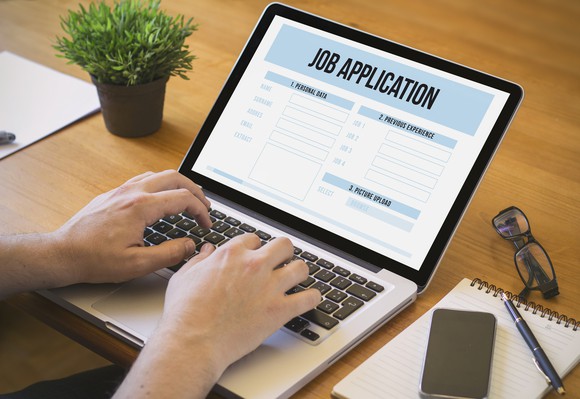Now that the new year is in full swing, countless workers will no doubt start dusting off their resumes and applying for different roles. If you're hoping to get a better job this year, you should know a thing or two about when hiring tends to peak and decline.
Of course, there's no exact science when it comes to timing your job search. A company can randomly post an opening during an otherwise slow month, and if you catch it in time, the position could be yours. That said, in 2017, Monster.com saw job listing spikes in seven different months: February, March, April, May, July, August, and November.

IMAGE SOURCE: GETTY IMAGES.
On the other hand, Executives Online analyzed 10 years of hiring data and found that the most popular months to advertise openings were February, March, May, June, October, and November -- so while there's some overlap with Monster.com's data, it doesn't perfectly align, either.
So when should you look for a new job? Here's a basic guideline to follow, keeping in mind that there are always exceptions to the rule.
January and February
The beginning of the year is generally a great time to seek out new job opportunities because after a mostly dormant December, companies are typically eager to hire. Granted, you may not see too many openings at the start of January, because that's when businesses will be easing back into the swing of things after the holidays. But come mid-to-late January, you're likely to see an uptick in job postings, which often carries well into February.
Another reason it pays to look for a new job early on in the year? Companies often get their hiring budgets renewed at the start of the year, which means they have more flexibility at that point as far as salaries go.
March-June
Though there are certain benefits to applying for a new job in January or February, hiring doesn't necessarily slow down in the months that follow. In other words, March, April, May, and June are all good months to get your resume out there and line up interviews. Furthermore, because companies are often anxious to fill open positions before the summer months, you may even see an increase in hiring during May and June, which the preceding data points to.
July and August
Summertime tends to get a bad rap as far as hiring goes. The logic is that since people tend to take vacation during that time, it's not the best period to be looking for work. But if we look at Monster.com's data, we see that July and August were among the more popular months as far as new job listings were concerned.
The verdict? Expect the hiring process to move more slowly during the summer, but don't shy away from applying, either.
September-November
The three-month period between September and November is generally a pretty good time to seek out jobs. First of all, companies that slow down on hiring during the summer will often compensate by ramping up during the months that immediately follow -- especially those intent on filling key roles before the end of the year. Along these lines, companies will often attempt to fill open positions before the holiday season kicks into gear and year-end reviews start monopolizing the bulk of everyone's time.
December
If there's one time during the year that's generally not ideal on the job search front, it's December. First of all, at that point, it's common for hiring managers and decision-makers to either be away for the holidays or get busy focusing on other things. Furthermore, come December, company budgets are often maxed out and don't renew until the following year.
But that doesn't mean you shouldn't start reaching out to contacts in December if you're looking to get the ball rolling on your job search. Quite the contrary – if you know you want a new job, start networking aggressively so that when things open up in January, you'll be at the top of your associates' lists.
No matter when you decide to look for a new job, the key is to be patient and thorough. With any luck, you'll eventually land a role that serves your career well.